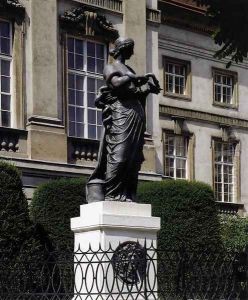Johann Martin Fischer Paintings
Johann Martin Fischer was an Austrian sculptor born in 1735 in the town of Riedlingen, which was then part of the Holy Roman Empire. He was primarily known for his work in the late Baroque and early Neoclassical styles, which were prevalent during the period of his activity. Fischer's career was marked by his successful blending of these artistic movements, and he is recognized for his contributions to sculpture and decorative arts.
Fischer received his early training in sculpture at the Academy of Fine Arts Vienna, where he honed his craft under the guidance of leading artists of the time. His education provided him with a solid foundation in the techniques and aesthetics of Baroque art, but as the Neoclassical movement gained momentum in the latter half of the 18th century, Fischer's style evolved to incorporate these new influences.
Throughout his career, Fischer worked on various prestigious projects, including church commissions and decorative works for the palaces of the Habsburg monarchy. He was adept at creating both religious and secular pieces, ranging from altarpieces and statues for churches to ornamental designs for architecture. His sculptures often featured dynamic compositions, expert craftsmanship, and an attention to anatomical accuracy that was characteristic of the Neoclassical style.
Fischer's work was not only appreciated in his home country but also garnered attention abroad. He contributed to the diffusion of the Neoclassical style within the Austro-Hungarian region and influenced other sculptors of his time. Despite his success, Fischer's name is not as widely recognized today as some of his contemporaries.
Johann Martin Fischer passed away in 1820, leaving behind a body of work that reflects the transitional period in European art from the flamboyant Baroque to the more restrained Neoclassicism. His legacy is preserved in the sculptures and decorative pieces that adorn various historical sites and collections across Austria and beyond.
